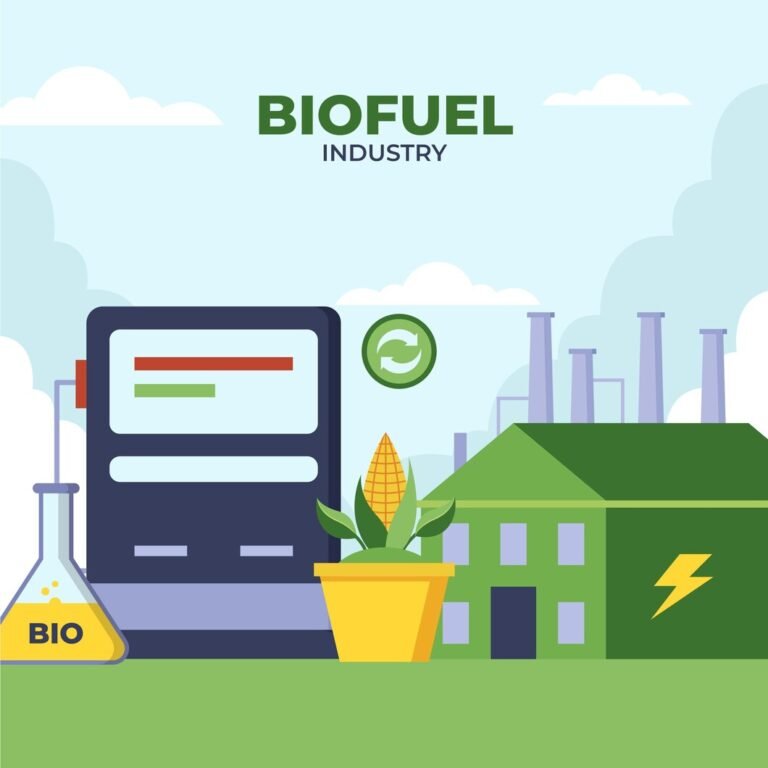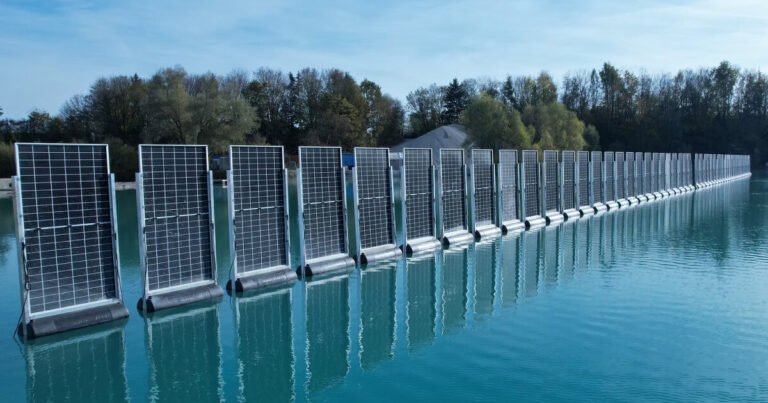Pros and Cons of Green Hydrogen
Green hydrogen is made by using electricity from wind, solar or other renewables to split water into hydrogen and oxygen. It sounds simple, but turning that simple chemistry into a climate solution at scale is hard, expensive and full of trade-offs. According to the International Energy Agency, global hydrogen demand reached about 97 million tonnes in 2023, but under 1% of that came from low-emissions production — a stark reminder that “green” hydrogen is still a tiny fraction of the market.
Governments and companies see green hydrogen as a way to decarbonise sectors that are hard to electrify directly — steel, heavy transport, shipping fuels and fertiliser production. A 2024 report by IRENA found that falling renewables costs and policy mechanisms such as auctions and guarantees are beginning to make green hydrogen competitive in specific use cases.
But the gap between promise and delivery is large. The IEA’s Global Hydrogen Review shows that while announced projects could deliver dozens of millions of tonnes by 2030, only a small share have reached final investment decisions and real buyers. “For these projects to be a success, low-emissions hydrogen producers need buyers,” IEA Executive Director Fatih Birol warned. This buyer-demand gap is one of the core economic problems for the sector right now.

The Advantages — Where Green Hydrogen Can Actually Help
Green hydrogen’s headline advantage is simple: when made with zero-carbon electricity, its production emits little or no greenhouse gas. Life-cycle studies show big potential savings. According to recent peer-reviewed reviews, green hydrogen can reduce life-cycle greenhouse-gas emissions by roughly 60–90% compared with hydrogen made from unabated fossil fuels, depending on the electricity source and technology used. That makes it a practical decarbonisation pathway where direct electrification or battery solutions aren’t feasible.
There are already real projects showing how this works in practice. NortH₂ in northern Europe aims to use offshore wind to power large electrolyser systems and supply green hydrogen to heavy industry across the Netherlands, Germany and Belgium — a long-distance, system-level solution that pairs big wind farms with industrial demand. A project like NortH₂ shows how hydrogen can act as a way to move renewable energy value to hard-to-decarbonise industries.
On the cost front, costs have come down from early projections. IRENA and industry analyses document falling renewable-power costs and improvements in electrolyser manufacturing that reduce the levelised cost of hydrogen in favourable locations. A report by industry groups and analysts in 2024 estimated that continued scale and policy support could make green hydrogen competitive in niche industrial uses within this decade.
Green hydrogen also enables flexibility and seasonal storage at the grid scale when paired with renewables. For regions with abundant, curtailed wind or solar, using excess electricity to produce hydrogen avoids curtailment and creates a storable commodity that can be reconverted to power or used as feedstock in industry. Studies mapping life-cycle environmental impacts find that using renewables directly is usually more efficient, but where direct use isn’t possible, hydrogen offers a lower-carbon option than fossil alternatives.
The Disadvantages — Real Limits, Costs and Social Risk
Cost is the single largest barrier. Electrolyser systems, installation and balance-of-plant add up: the U.S. Department of Energy and industry reports in recent years show electrolyser capital costs remain high and installation costs have sometimes exceeded earlier optimistic estimates because of supply chain and inflationary pressures. That keeps green hydrogen more expensive than hydrogen made from natural gas unless policy support or very cheap renewables close the gap.
Another major disadvantage is the “buyer problem” and uncertain demand. The IEA and market reporting repeatedly warn that many announced projects lack confirmed offtake or buyers — a structural mismatch that can leave projects stranded or force cancellations if prices or policy support change. Reuters and other reporting found that while investment decisions and projects have multiplied, demand signals and regulatory clarity often lag behind, creating financial and commercial risk.
Infrastructure and storage present further challenges. Hydrogen is a tiny molecule that leaks and embrittles metals; moving it at scale needs upgraded pipelines, dedicated storage caverns or conversion to carriers such as ammonia. Those systems are costly and sometimes politically contentious because they cut across communities and existing gas infrastructure. Lifecycle studies also show that upstream impacts — manufacturing of electrolysers, material sourcing and grid impacts — must be managed to keep net emissions low.
There are also real, on-the-ground social and commercial consequences when projects stumble. According to The Guardian, the Australian miner Fortescue’s high-profile hydrogen push has faced restructurings and project delays that led to layoffs. Andrew Forrest, Fortescue’s founder, insisted the company remained committed, saying “We are by no means winding back on our commitment to green hydrogen,” but the disruption showed how political shifts, high energy prices and changing policy landscapes can quickly reshape corporate plans and local job prospects. This is a cautionary tale about the sector’s risks for workers and communities that bank on new hydrogen jobs.
Below is a short, factual snapshot comparing a few key load-bearing numbers that readers often ask about, based on the studies and sources cited in this article.
| Statistic | Figure (latest available) |
|---|---|
| Global hydrogen production (2023) | ~97 Mt |
| Share of low-emissions hydrogen (2023) | <1% of production |
| Installed electrolyser capacity (end-2023) | ~1.4 GW |
| Electrolyser CAPEX estimate range | ~$1,400–$2,500 per kW (recent assessments) |
| Lifecycle emissions reduction vs gray H₂ | ~60–90% (varies by study) |
(These figures are indicative; specific local projects will vary by electricity price, electrolyser type and utilisation rate.)
What Policymakers, Companies, and Communities Should Do Next — Practical Advice
First, create clear markets and buyer signals. The IEA and industry observers argue that producers won’t invest at scale unless there are reliable buyers and offtake agreements that derisk projects. Governments can help by using procurement, blending mandates, or support schemes that link credible demand to supply investment. “Low-emissions hydrogen producers need buyers,” IEA’s Fatih Birol said — a simple statement that points to a complex policy fix.
Second, prioritise use cases where green hydrogen is the best decarbonisation option. Direct electrification should remain the first choice where it’s efficient; green hydrogen should be directed to industries and transport modes where alternatives are limited (e.g., ammonia for shipping, feedstock for chemicals, direct reductions in steel in certain processes). Life-cycle assessments support this targeted approach because hydrogen’s environmental value depends heavily on how and where it replaces fossil fuels.
Third, invest in supply chains and lower costs systematically. That means scaling up electrolyser manufacturing, standardising designs, and reducing installation bottlenecks — all of which lower CAPEX over time. Governments can accelerate learning curves through targeted auction designs, research and development support, and predictable regulation. IRENA’s guidance on auction design and several market analyses show that auctions and predictable policy can bring down costs.
Fourth, manage social impacts and avoid overpromising jobs overnight. Real people are affected when projects are announced and cancelled; the Fortescue restructuring is a real-world example of how company timelines shift and workers suffer consequences. Communities and governments should plan training, phased rollouts and contingency measures so work is real, fair and durable. Transparency around timelines, realistic cost expectations and community engagement will reduce social harm.
Finally, demand robust environmental accounting. Not all “green” hydrogen is equal — the carbon intensity depends on the electricity source, grid interactions and production practices. Policymakers should require life-cycle greenhouse-gas reporting and set minimum standards so procurement buys genuine emissions reductions rather than greenwashed claims. Peer-reviewed LCAs and sectoral databases should underpin these standards.
Conclusion
Green hydrogen is not a silver bullet, but it is a valuable tool in the net-zero toolbox when used in the right places, paid for in the right ways, and regulated transparently. It can deliver large emissions cuts for specific industries and create new trade and energy-system flexibility. But the sector faces hard limits: cost, infrastructure, uncertain demand and social risk. Governments, companies and local communities need coordinated policy, honest timelines and investment in supply chains and skills if green hydrogen is to move from small, hopeful projects to reliable, climate-positive systems. The evidence from energy agencies, peer-reviewed studies and recent corporate experience points to the same conclusion: treat green hydrogen as strategic and selective, not universal and immediate.







